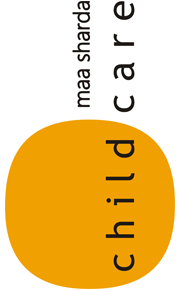 90996 08880, 90997 08880
90996 08880, 90997 08880 +91- 72 1110 3330
+91- 72 1110 3330 Make An Appointment
Make An Appointment maashardachildcare@gmail.com
maashardachildcare@gmail.com
The color, symbolizes the sun, the eternal source of energy. It spreads warmth, optimism, enlightenment. It is the liturgical color of deity Saraswati - the goddess of knowledge.
The shape, neither a perfect circle nor a perfect square, gives freedom from any fixed pattern of thoughts just like the mind and creativity of a child. It reflects eternal whole, infinity, unity, integrity & harmony.
The ' child' within, reflects our child centric philosophy; the universal expression to evolve and expand but keeping a child’s interests and wellbeing at the central place.
The name, "Maa Sharda;" is a mother with divinity, simplicity, purity, enlightenment and healing touch, accommodating all her children indifferently. This venture itself is an offering to her........
the wheel of fortune elizabethan erathe wheel of fortune elizabethan era
Wheel of Fortune Rules - . fate and superstition in the elizabethan era The Elizabethans believed in fate which was influenced by the Wheel of Fortune or Rota Fortuna and it is a medieval philosophy referring to fate. Execution by the Wheel. However, today the royal family's immunity is up to debate, something it certainly wasn't in Shakespeare's time. The wheel belongs to the goddess Fortuna, who spins it at random, changing the positions of those on the wheel - some suffer great misfortune, others gain windfalls. 3gEN2Macbeth - The Elizabethan World Picture - Google Search In medieval and ancient philosophy the Wheel of Fortune, or Rota Fortunae, is a symbol of the capricious nature of Fate.The wheel belongs to the goddess Fortuna (Greek equivalent Tyche) who spins it at random, changing the positions of those on the wheel: some suffer great misfortune, others gain windfalls.The metaphor was already a cliché in ancient times, complained about by Tacitus, but . K. "Fortune's wheel": Reflections on the Jacobean Era The fates of people around Portia shift constantly, while her situation generally improves without problem. According to belief, one's fate is determined by the stars and God has planned his plan for you before your very very life. The neat medieval model of the wheel of fortune is simply inadequate as an . Men of the upper class were placed on top and pore men with tragic lives, on the bottom. In the Elizabethan era people strongly believed in superstition, fate, destiny and the wheel of fortune. Venus, 4. the sun, 5. or Rota fortunæ in gyro ", is particularly interesting in this regard. The Wheel of Fortune By Eyla Sloan and Alana Lancaster. [11] Essentially, according to the four humours model, general health is held to be reliant on the balance of four major body fluids: blood .

